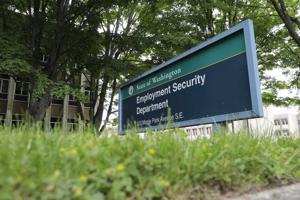Washington state payrolls add 6,300 jobs; jobless rate drops to 5%

(The Center Square) – Washington state’s economy added 6,300 nonfarm jobs in October, with the seasonally-adjusted monthly unemployment rate falling slightly to 5%, according to the state’s Employment Security Department (ESD).
October’s unemployment rate represents a slight improvement over last month’s revised unemployment rate of 5.1% and is a full two percentage points below October 2020’s 7% unemployment rate. The U.S. unemployment rate was 4.6% in October.
In Washington state, the private sector gained 15,600 jobs during the month and the public sector lost 9,300 jobs, the federal Bureau of Labor Statistics (BLS) estimates.
On a year-over-year basis – from October 2020 through October 2021 – the state is estimated to have an additional 156,600 people employed, with the private sector gaining 138,000 jobs and the public sector gaining 18,600 jobs, according to the preliminary ESD report for October that came out on November 17. (Washington state county unemployment numbers were released on November 23.)
The three industry sectors with the largest year-over-year employment gains not seasonally adjusted, were leisure and hospitality, up 46,500 jobs; professional and business services, up 26,700 jobs; and government, up 18,600 jobs.
The mining and logging industry was down 100 jobs during that same time period.
ESD paid unemployment insurance benefits to 58,998 people in October, a decrease of 183,002 over the previous month.
“The state has been making continued progress toward recovering jobs lost during the pandemic,” ESD economist Paul Turek said in a statement. “Constraints that may have prevented workers from re-entering the labor market are easing, and more workers appear to be taking advantage of the high availability of jobs.”
The improving job numbers mostly reflect Washington state coming out of the pandemic in “getting back to normal,” Turek told The Center Square.
Washington state lost 411,000 jobs from February 2020 to April 2020 and has since recovered 335,000 of those jobs.
That represents a jobs recovery rate of 81 percent, Turek said, which mirrors the national figure.
“We are neck-and-neck with the nation,” he said.
Federal policy related to the pandemic is also having an impact on Washington state’s improving jobs picture – and the nation’s – he noted.
“The pandemic obviously put everything on hold,” Turek said, referencing the spring of 2020 when coronavirus fears forced businesses to close or cut hours and kept many Americans at home as a health precaution. March and April of last year saw employers slash more than 22 million jobs nationwide.
So far, in response to the pandemic, Uncle Sam has paid out $3,200 to eligible adults: $1,200 under the Coronavirus Aid Relief and Economic Security Act in March 2020; a second round of $600 stimulus checks in December 2020; and $1,400 under the American Rescue Plan signed in March by President Joe Biden.
The federal government’s efforts have resulted in “quite a bit of spending power taking place across the nation,” Turek said.
It works like this, he explained: More dollars in people’s hands courtesy of the federal government means people spending more money. That translates into greater demand for goods and services, which in turn puts pressure on businesses to produce more goods and services. In turn, businesses need to hire more people.
“That’s going to juice the economy even more,” Turek said.
Recovery from the pandemic is a process that is not complete, as evidenced by companies now complaining they can’t find workers to fill jobs. Even 18 million new hires nationwide since April 2020 leaves the United States 4 million short of the jobs it had in February 2020.
“People have been stubborn to get back in,” Turek said of those deciding against returning to the labor force. He was optimistic that would “eventually go by the wayside.”
Another concern: price spikes that are reaching 30-year highs thanks to inflation.
That means the Federal Reserve might start to pull back on its support for the labor market before the economy reaches a point of full employment, Turek said.
“Right now, that’s the debate of the moment,” he said.
The flood of federal money may be doing more harm than good on that front.
“When you over-juice it (the economy), you produce inflation,” Turek said.
Disclaimer: This content is distributed by The Center Square
